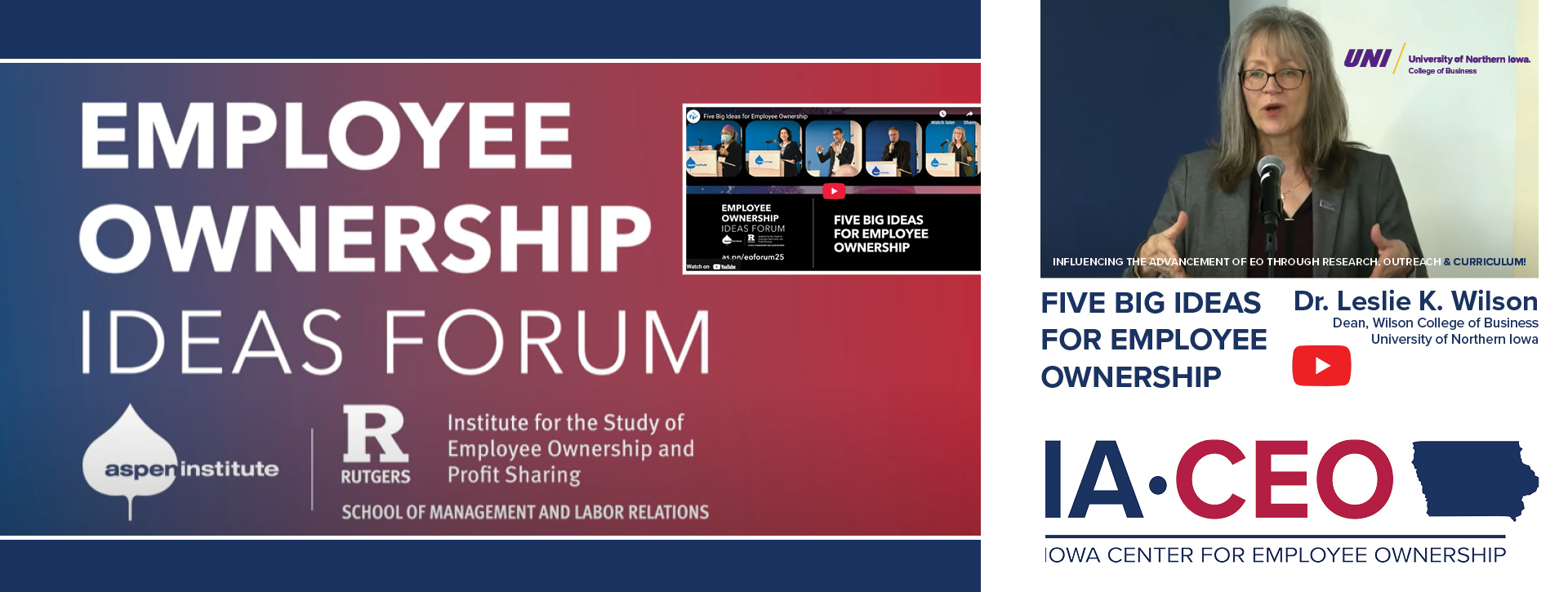Business Transition

Understanding
OPPORTUNITY.
Business valuations and succession planning ensure the longevity and stability of a company. Without a plan, the business owners, employees, and community can be negatively impacted.
Together, with the Iowa Center for Employee Ownership, we are able to offer expert guidance, education, and resources that safeguard the continuation of the business. We help businesses by providing support, resources, and assistance to implement effective, sustainable strategies.
LET'S START A CONVERSATION ABOUT
Business & TRANSITION.
What plans do you have for succession or ownership transfer within your company?
How are you preparing for leadership changes or organizational shifts?
Have you considered the impact of industry trends and disruptive technologies on your business model during transitions?
Get answers to these questions by reaching out to our knowledgeable staff.
Succession Planning Starts Now—Not Someday
Succession planning can feel overwhelming—full of unknowns and easy to push aside. But postponing the conversation doesn’t make the need disappear. The good news? You don’t have to figure it out alone.
ADVANCE IOWA has partnered with the University of Northern Iowa’s Family Business Center and Iowa SourceLink to equip Iowa’s small and medium size business owners with the tools, guidance, and support they need to build a thoughtful succession strategy.
In this webinar, you’ll learn:
- What a succession plan really involves
- Why the ideal time to start planning is the day you launch your business
- How to prepare for a transition—whether it’s next month or two decades away
No matter your timeline, this session is designed to help you take control of your future with clarity and confidence. Be sure to tune in next week for Day Two of this empowering series. And if you're ready to take the next step, contact us for a consultation—we’re here to help you move forward with purpose.
Empowering Businesses with Transition Solutions
At little to no cost, our team of experts assists businesses and their owners with their business transition needs. Whether you're evaluating your company’s value, planning for succession, considering ownership transition, or exploring employee ownership, our services support every stage of the transition.

Business Valuation
Obtain a current fair market value estimate of your company to help you make well-informed decisions about ownership transition.

Business Driver Assessment
Identify the key factors influencing your company’s growth, profitability, and sustainability to strengthen operations and prepare for future transitions.

Business Continuity Consultation
Ensure your business can withstand disruptions by developing strategies to maintain operations and safeguard long-term stability.

Succession Planning Consultation
Learn about strategies to consider to develop a seamless business transition plan while preserving your company’s legacy and financial health.

Employee Ownership Consultation
Explore employee ownership options with expert guidance tailored to your business’s unique needs and long-term goals.

ESOP Pre-feasibility Study
High-level analysis of company financials to evaluate the potential net benefits of pursuing an ESOP to give direction before engaging a feasibility study consultant.
What does legacy mean in business?
 Legacy isn’t only about the name on the building — it’s about the values you leave behind.
Legacy isn’t only about the name on the building — it’s about the values you leave behind.
For many business owners, the dream is to pass the company on to the next generation — maybe even to your grandchildren. But what happens when that’s not the path they choose?
Employee ownership offers a powerful solution. It ensures the company you built — its mission, culture, and impact — stays intact. It keeps the jobs in your community. It protects what you've worked so hard to create.
Whether through an ESOP, a worker cooperative, or an employee ownership trust, transitioning ownership to your employees allows your legacy to live on — not just in name, but in purpose.
Your business can continue to grow, thrive, and support the people who helped build it.
That’s a legacy worth leaving!
If you have questions about where to start, reach out through the contact info below.
Five Big Ideas for Employee Ownership

We’re proud to see Iowa leadership shaping the future of business education and employee ownership on a national stage!
Dr. Leslie K. Wilson, Dean of the Wilson College of Business at the University of Northern Iowa (UNI), presented one of the "Five Big Ideas for Employee Ownership" at the Employee Ownership Ideas Forum in April—hosted by The Aspen Institute and the Rutgers Institute for the Study of Employee Ownership and Profit Sharing. at the
Leslie's' big idea? Incorporating employee ownership into the business college curriculum—reflecting UNI's commitment to teaching, research, and outreach that prepares students to lead in inclusive, sustainable business models. Our team is excited to see this kind of vision coming from Iowa and contributing to a growing national movement.
Advisors’ Edge Training Seminars
 Unlocking Employee
Unlocking Employee
Ownership for Your Clients
Discover how employee ownership can be a transformative exit strategy for your clients. Advisors’ Edge: Unlocking Employee Ownership for Your Clients is a free training program for CPAs, financial planners, and attorneys, brought to you in collaboration with the Employee Ownership Expansion Network (EOX) and Project Equity. This course equips trusted advisors with the tools and insights needed to guide their clients through the transition to employee ownership.
Attendees will:
Enhance professional expertise & learn:
- The fundamentals of employee ownership structures
- The financial and tax benefits of employee ownership
- Best practices for supporting business owners considering employee ownership as an exit strategy
Earn CE credit:
- 1 hour from NASBA
- 1 hour from CFP
- 1 hour from EPI-CEPA and/or
- 1 hour from BEI
Plant the Seed!
Empower your clients to build enduring legacies, retain jobs in their communities, and unlock new possibilities for their businesses—all while elevating your practice with actionable, accredited knowledge.
Register now to secure your spot and join the movement toward building stronger businesses and communities through employee ownership!

Let's talk.
8120 Jennings Drive | Cedar Falls, IA 50614
319-273-4692 | info@advanceiowa.com
Todd.Hutcheson@uni.edu
Janell.Crow@uni.edu

